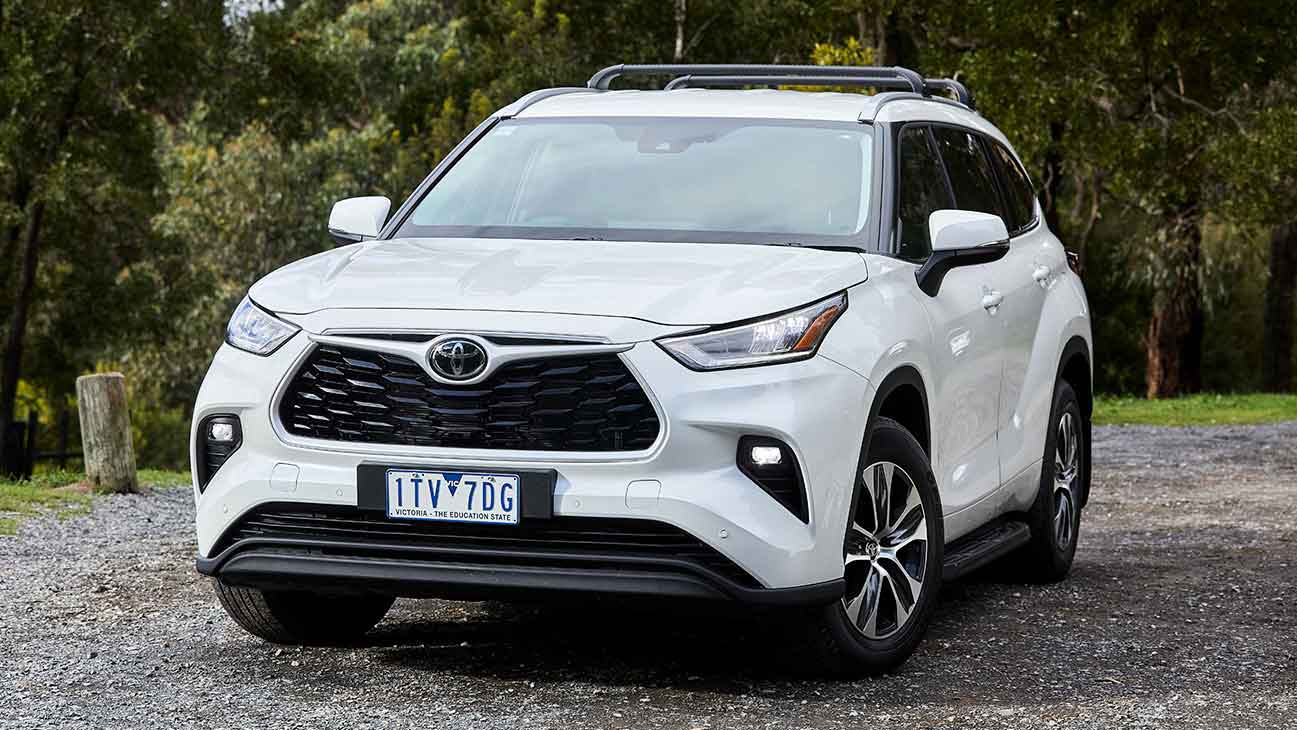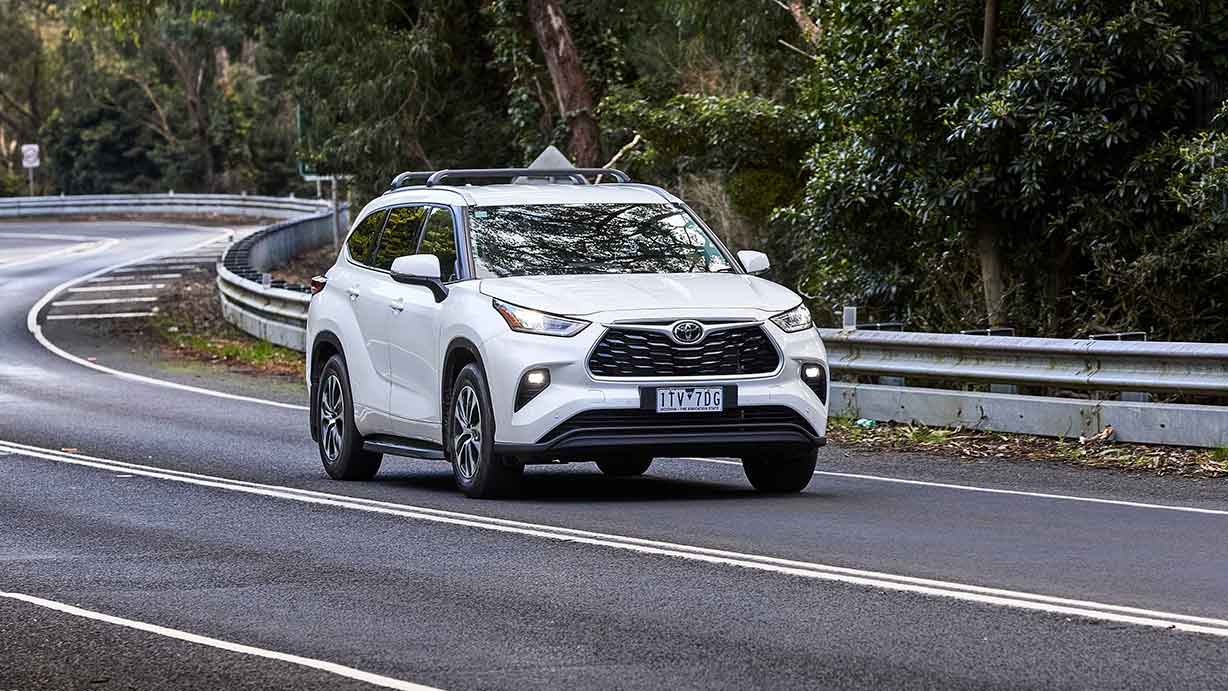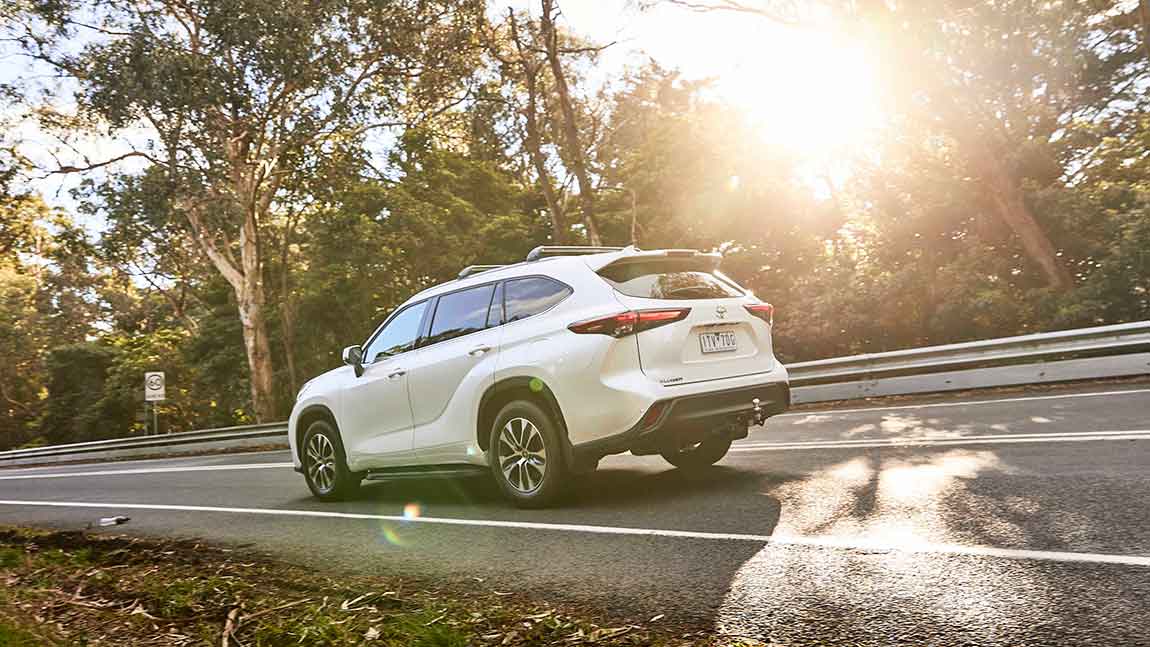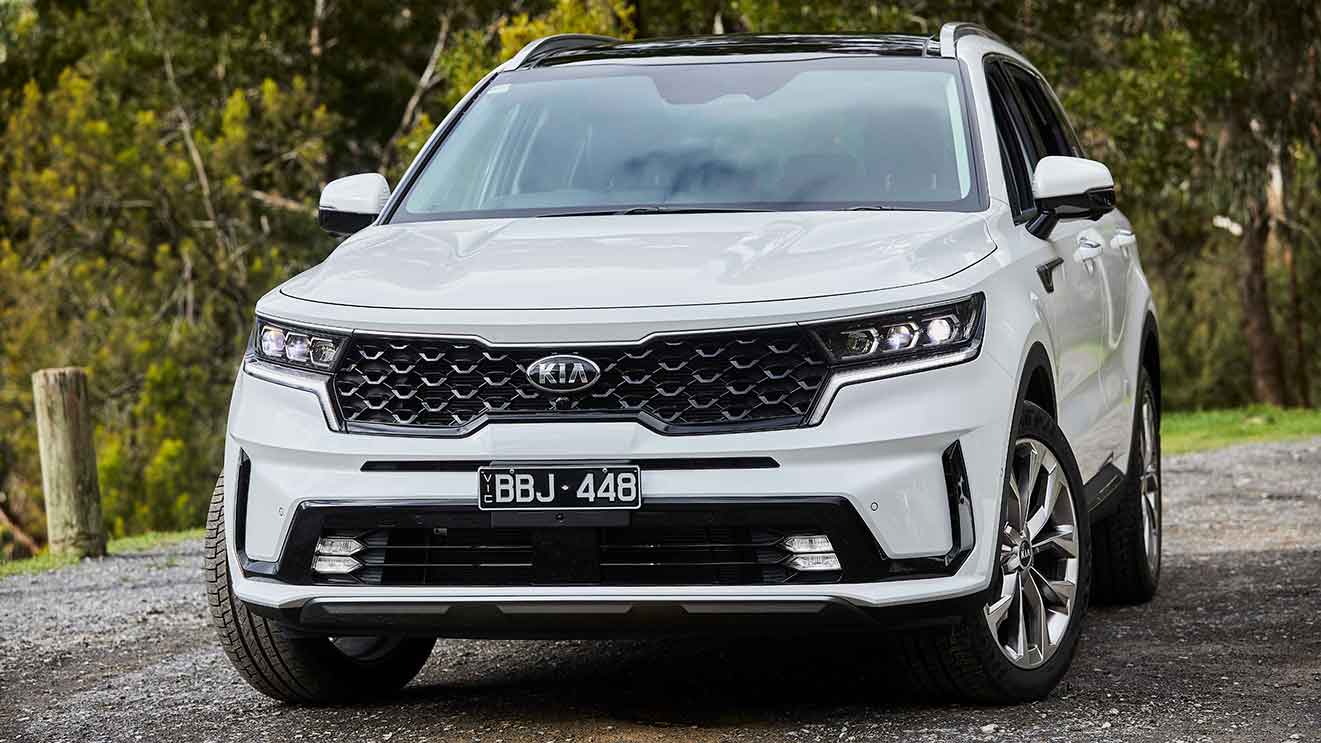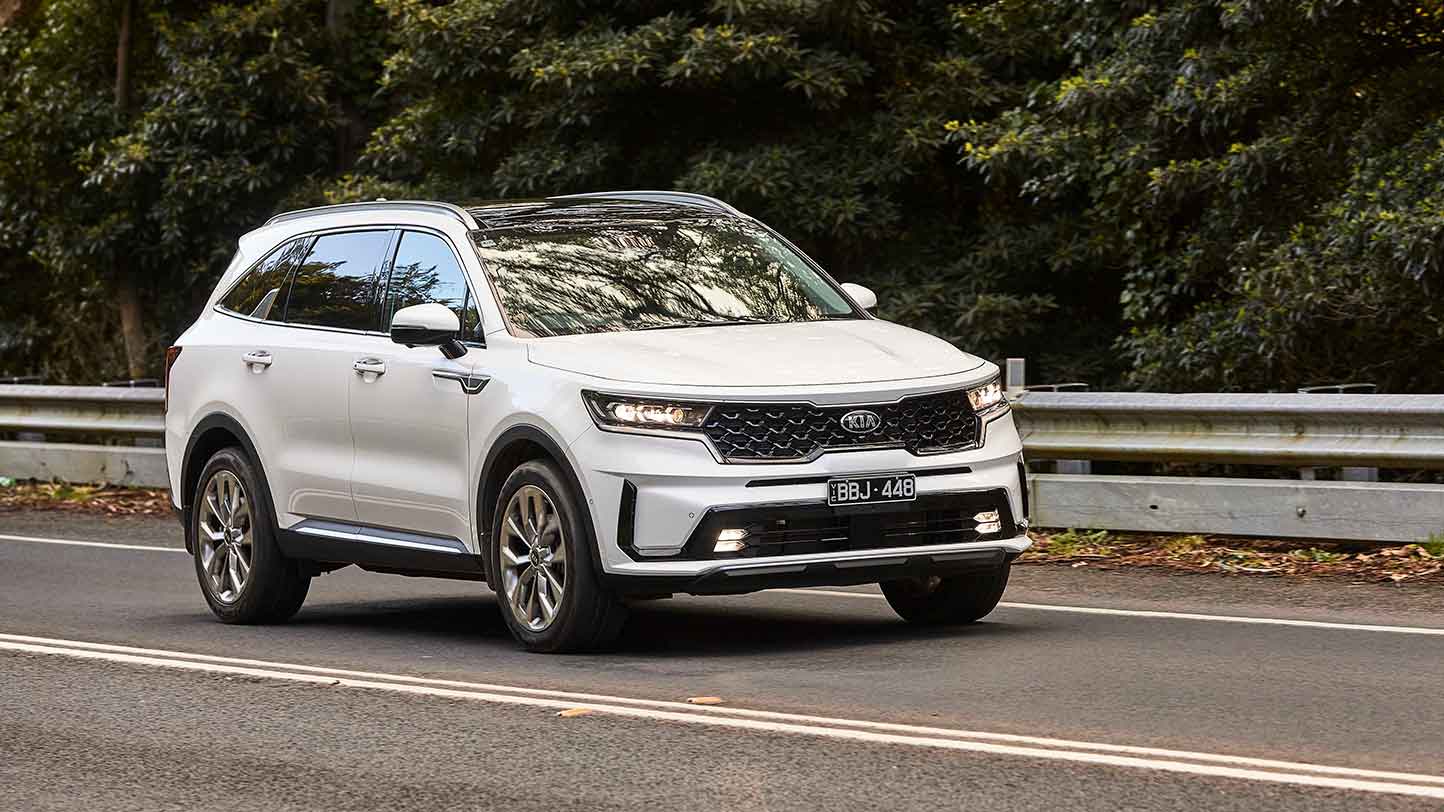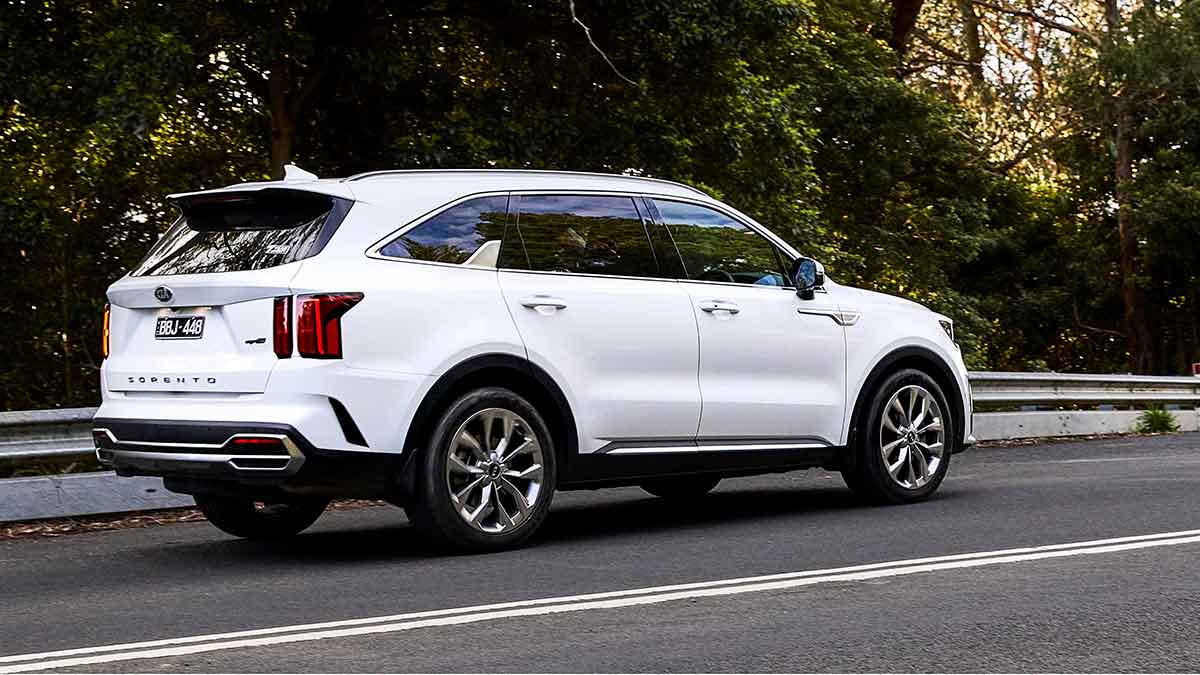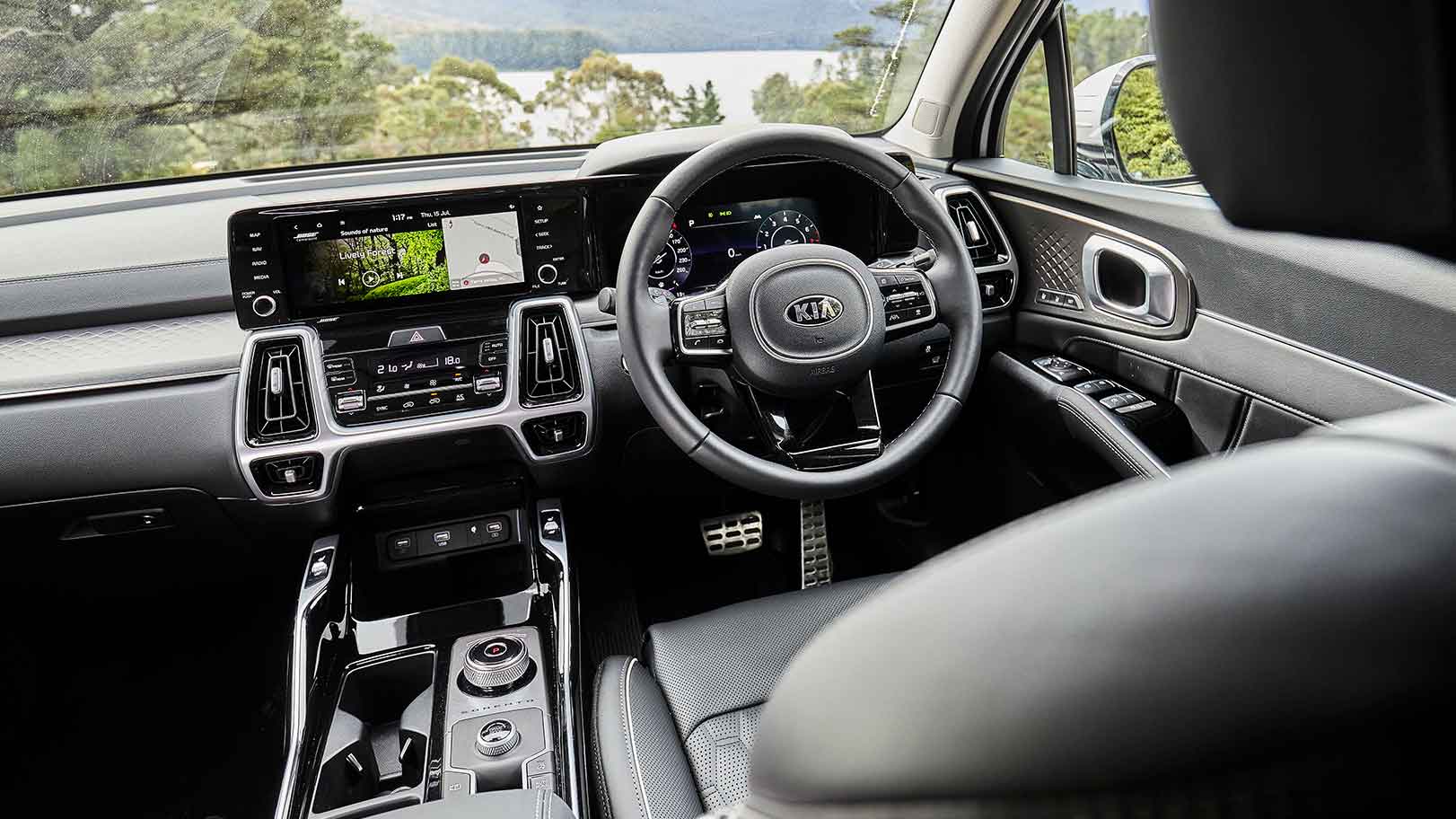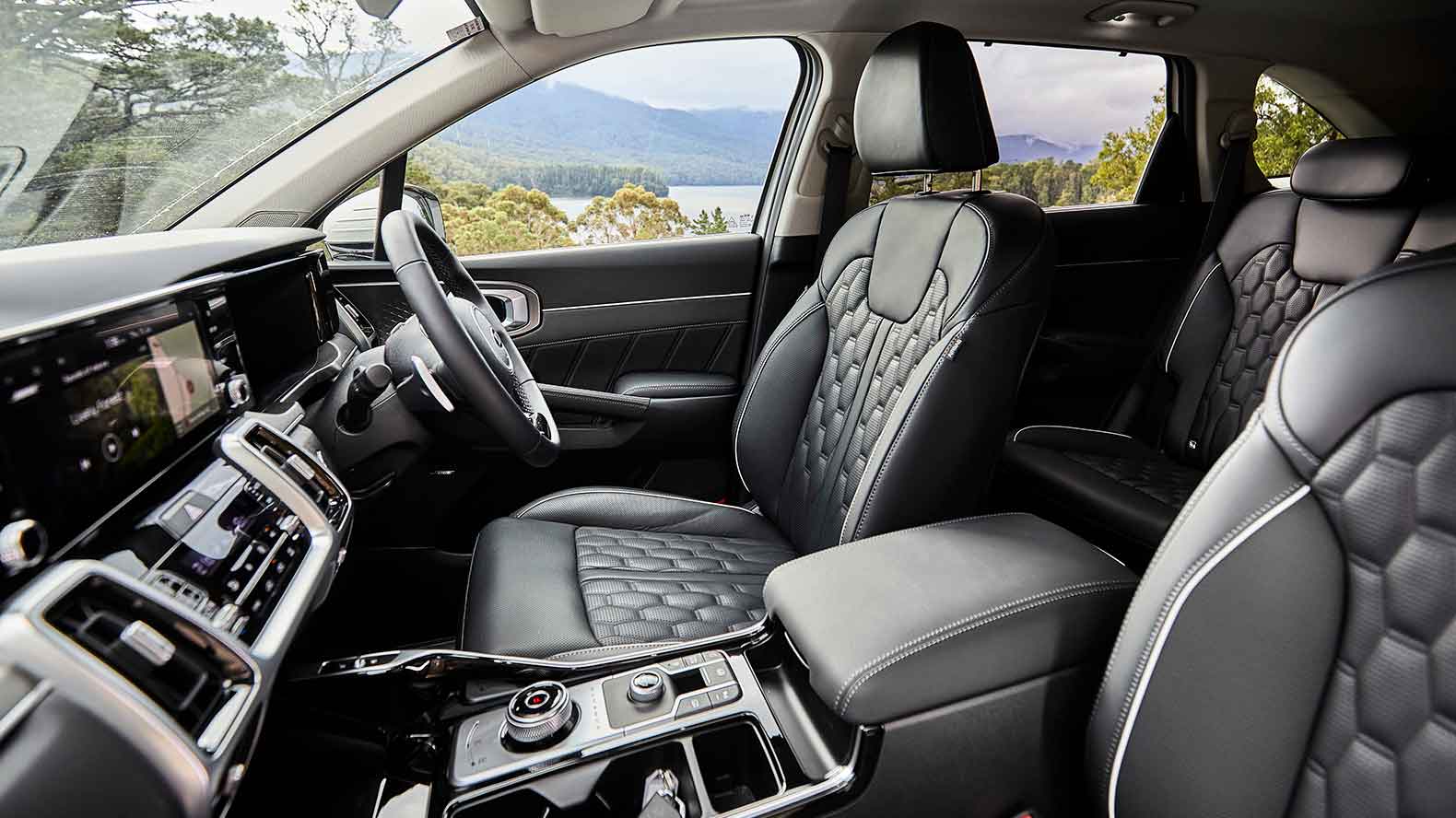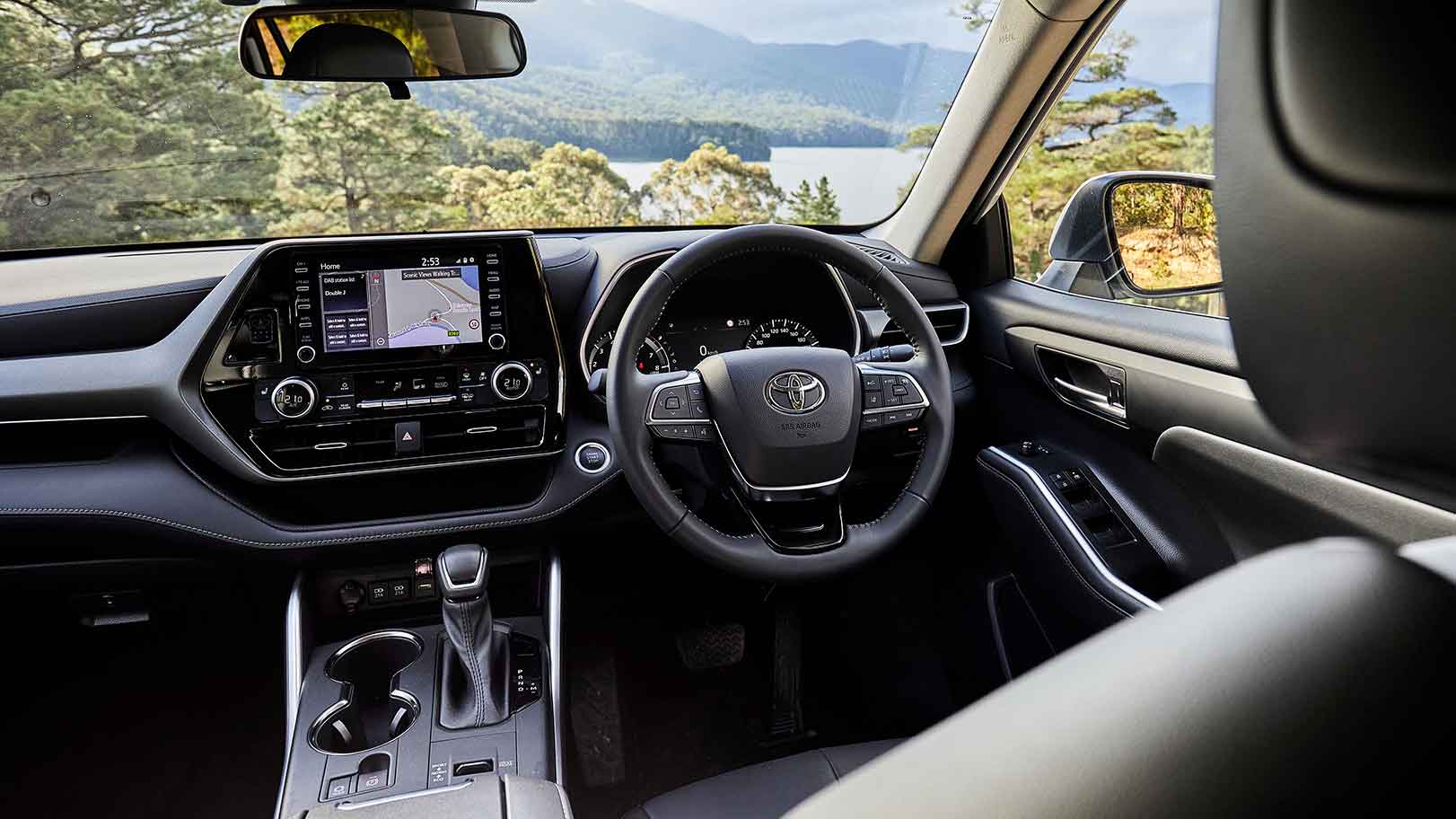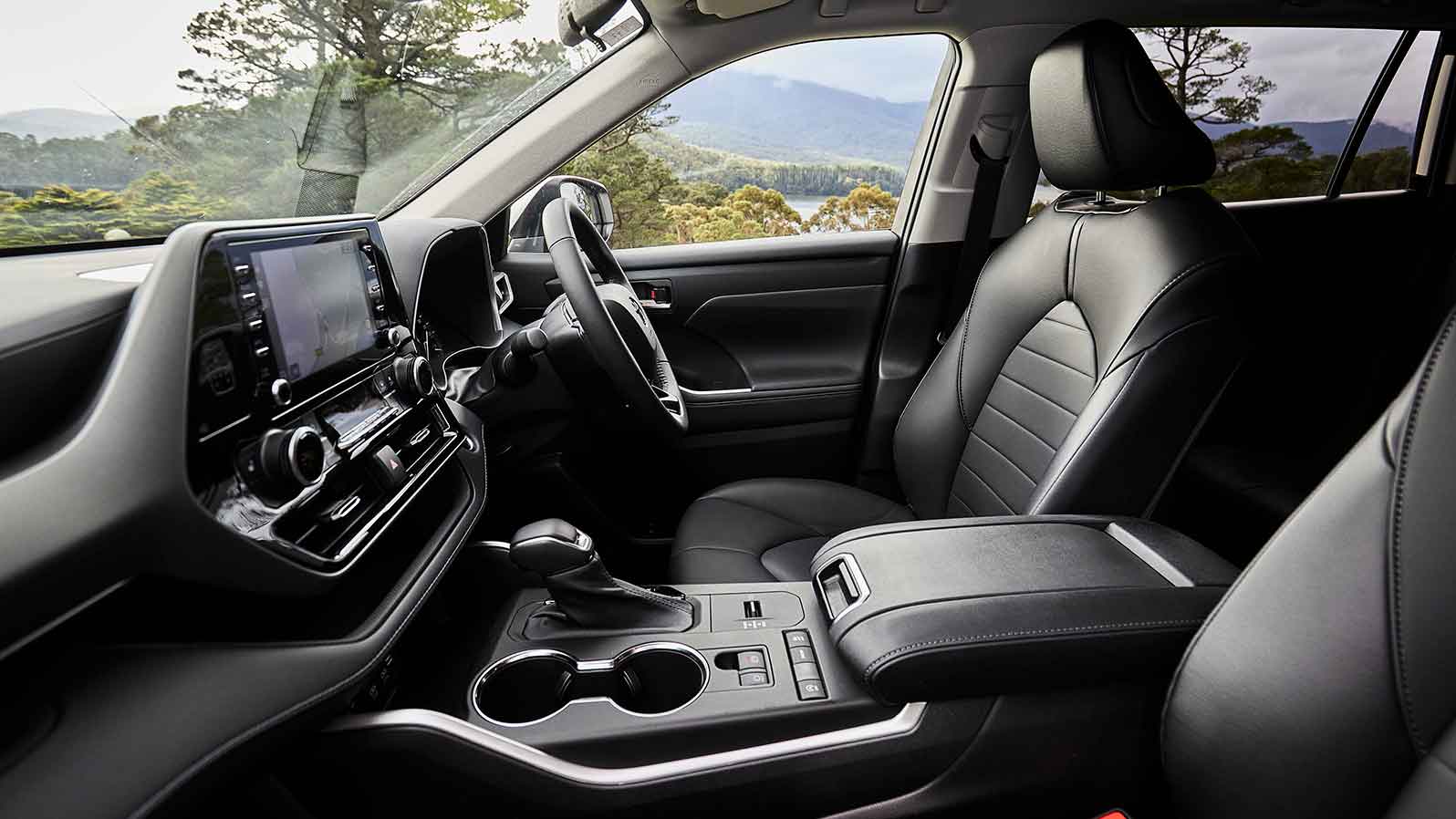The ninth-generation Toyota HiLux has arrived, bringing with it a futuristic forward exterior design, more safety and tech and the same rugged capability owners love. Will the updates tempt private buyers away from the Ford Ranger or are they just enough to keep fleets onside?
Kia Sorento versus Toyota Kluger 2021 comparison test
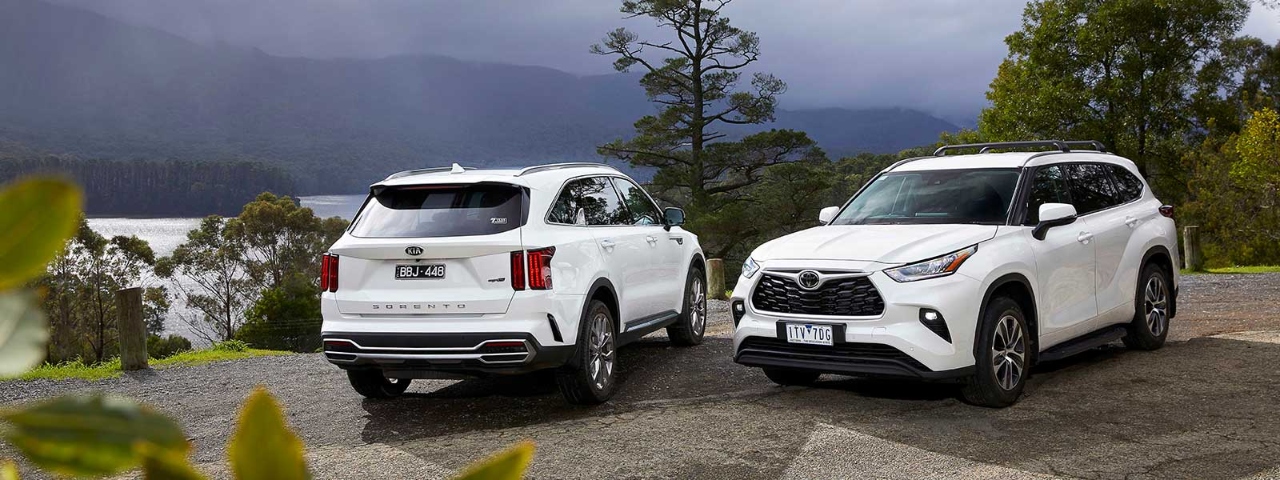
The impressive Kia Sorento seven-seat SUV and Toyota's all-new Kluger go head to head in our comparison test.
Last year more Australians bought a Toyota Kluger than any other large seven-seat SUV – excluding dedicated off-roaders – so the new version has a lot riding on it. It’s the latest model to be underpinned by the Toyota New Global Architecture (TNGA) platform, which is said to bring big improvements to ride comfort, handling and dynamics.
To test that claim, we put it up against one of the smoothest operators in the large SUV category – the Kia Sorento. Launched last year in fourth-generation guise, the Sorento has grown its sales thanks to bold styling, engaging dynamics and impressive packaging. It’s won a bunch of motoring media awards and is one of the top picks for family buyers.
Can the Sorento maintain its place at the top of the segment, or will Toyota’s recent good form see it topple its Korean counterpart? Read on to find out.
Kia Sorento GT-Line
Thumbs up: Dynamically engaging, impressive value, premium cabin, safety, design.
Thumbs down: Occupant storage, muted acceleration.
Toyota Kluger GXL
Thumbs up: Comfortable ride, entertaining handling, interior space and packaging.
Thumbs down: Slow cruise control response, average multimedia.
How much do these models cost?
To keep it even, we compared front-wheel-drive V6 petrol variants of both models. We chose the Kluger GXL and not the higher-grade Grande because the Sorento GT-Line is just $4220 dearer than the Kluger GXL, but the flagship Kluger Grande is nearly $9000 pricier than the Sorento GT-Line.
Kluger pricing runs from $47,650 to $75,400 before on-road costs, and variants include front-wheel-drive V6 petrol, all-wheel-drive V6 petrol or all-wheel drive hybrid –the first time the Kluger has been offered as a hybrid – across GX, GXL and Grande grades.
The Kia Sorento is priced from $46,850 to $64,070 before on-road costs with a choice of V6 petrol front-wheel drive or turbo-diesel all-wheel drive in S, Sport, Sport+ and GT-Line grades. By early next year, Kia will add both hybrid and plug-in hybrid variants to the Sorento range.
Our Sorento FWD V6 GT-Line test car is priced at $61,070, with optional premium paint adding $695. Options and accessories fitted to the Kluger included roof racks, tow bar kit, sidestep and premium paint, adding $3550 to its $56,850 price tag.
When it comes to value for money, the clear standout is the Kia. For a tick over $60k, you get a fully loaded SUV with nothing missing from the standard features list (see table below). This level of specification is what you should get in a premium car. If only.
The Toyota has a solid list of standard gear for a mid-grade variant, but it’s missing a few things found in the Sorento (and the Kluger Grande), like a head-up display, auto-dimming rear-view mirror, premium audio and more.
What safety features do they have?
Toyota has recently prioritised safety as standard on all its new models, even down to its smallest offering, the Yaris hatch. It’s no different with the new Kluger, which comes with a suite of Toyota Safety Sense driver aids as standard across the range.
The lane-keeping aids in both SUVs function well, generally ensuring the vehicle stays within the line-markings. However, the Kluger’s adaptive cruise control has a quirk we’ve noticed driving several Toyota and Lexus models. It’s super slow to respond when you’re driving down a hill, and you end up going well over the set cruise speed.
The Kia’s audible alerts for functions like lane departure warning are much more appealing than the Kluger’s harsh tones. The Kia also has a neat party trick. The Remote Smart Parking Assist feature allows you to move the vehicle autonomously out of a front-and-back parking space remotely using a button on the key fob. Handy if someone has parked too close at the shopping centre car park. The Kia also has clever cameras that display the side of the car when you indicate. Handy for keeping an eye on cyclists.
Both SUVs come with a 5-star ANCAP rating.
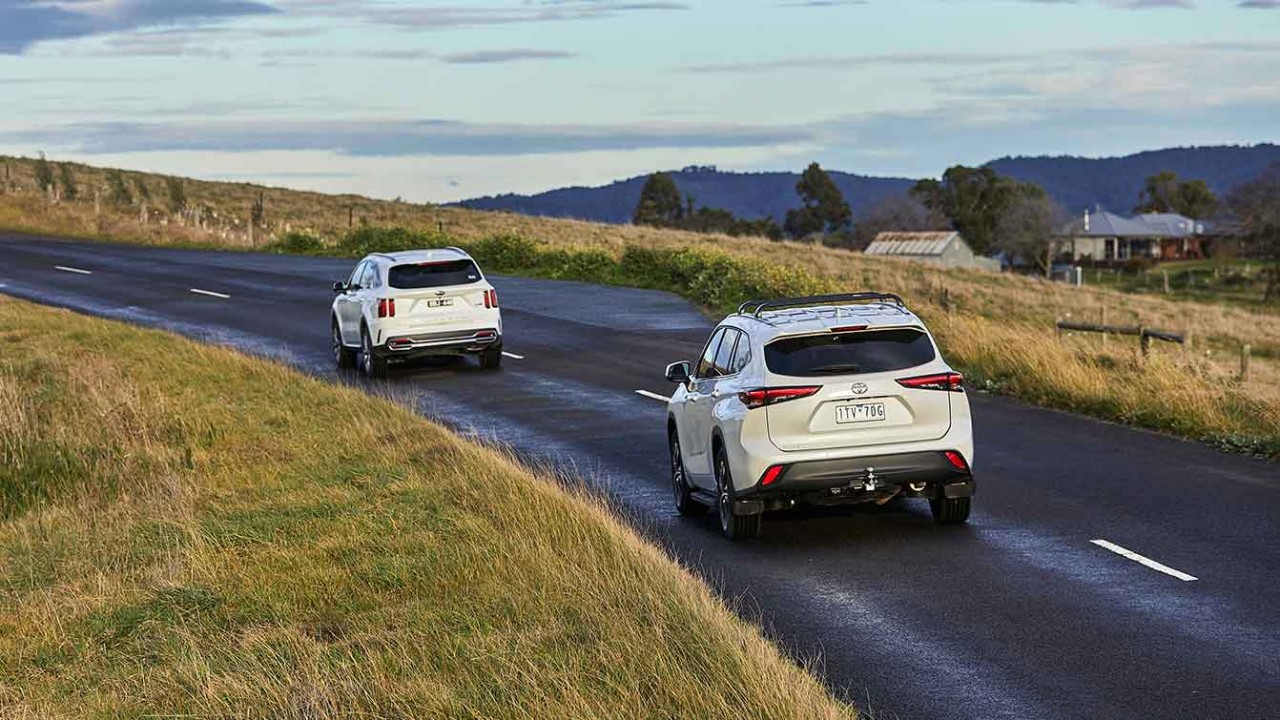
The Sorento and Kluger are both comfortable family haulers with engaging dynamics. Photos: Matt Harvey.
What's the space like inside?
First, a little about the exterior. The new Kluger design is a clear evolution of the previous model. In terms of silhouette, it’s virtually identical, but it’s differentiated from its predecessor by a bolder grille and sharper head and taillights.
The Sorento has a much bolder, squared-off look that’s designed to appeal to the American market. In the key dimensions – length, height, width and wheelbase – the Sorento is smaller than the Kluger, and that’s evident when they are side by side. But the squat stance and proportions of the Sorento give it an edgy look.
The Kluger’s interior is a more modern take on its replaced model, with a familiar console and dash layout and handy shelves running along the dash.
Storage in the Kluger gets a big tick, with large cup holders, space for large bottles in the door pockets, and a deep central storage bin. It offers a commanding driving position, and visibility is good, despite the thick pillars.
The front power-adjustable seats have excellent support, and they’re very comfortable, although the fake leather looks and feels cheap. Good for cleaning up spills though.
Toyota’s multimedia system is easy to navigate but far from class-leading. The screen looks small, the push buttons on the side look dated, and the graphics are naff.
The Sorento isn’t as big as the Kluger, but it uses its space well. It can’t beat the Kluger when it comes to cabin storage. Big bottles won’t fit in the door pockets, and the central bin is smaller than the Toyota’s.
The overall look and feel of the Sorento’s cabin is a big step up from the Kluger, with high-quality materials like gorgeous quilted Nappa leather seats with contrast piping and stitching. The dash design is more contemporary and appealing, too, with its stretched infotainment screen and Star Wars-esque air vents. If you didn’t know it was a Kia, you’d swear you were in a premium European SUV.
Kia’s latest multimedia system is more up-to-the-minute than the Kluger’s, with a simple, visually appealing menu.
There’s no shortage of head, leg, and toe room in the spacious Kluger when it comes to the second row. The rear seats are comfier than the Kia’s, but you can’t adjust the backrest. Second-row passengers have access to two USB ports, map pockets, climate controls, and roof-mounted air vents, as well as big bottle storage in the doors.
The Sorento can’t quite match the Kluger for legroom, but it’s still spacious, and there’s acres of headroom, despite the panoramic sunroof. Big cupholders and the central armrest make up for the small door storage, while the seats are comfortable but flat. The second row has knee-level air vents, three USB ports, a 12-volt outlet, map pockets and nets and window shades.
The Kluger’s rear seat is 60/40 split-fold, with the 40 on the passenger side. That makes it easier for occupants to access the third row safely when parked on the street, as you only need to fold down one seat rather than two. The Sorento’s rear seat has the 40 section on the driver’s side.
Aside from that, accessing the third row is easier in the Sorento, thanks to handy one-touch folding second-row seats. Surprisingly, given the dimensions of the two SUVs, the Sorento has more third-row occupant space. Getting in and out of the back row is more of a chore in the Kluger. The Sorento has a more generously equipped third row with climate controls, side air vents, heaps of storage and USB ports. The Kluger lacks one-touch folding seats and only has cup holders and roof-mounted air vents in the third row. Both SUVs have curtain airbags that extend to the third row.
In terms of cargo space, the Kluger can swallow 241 litres to the Sorento’s 187L with all seats raised. With the third row stowed, the Sorento takes the lead with 616L versus 552L.
How do they drive?
Both the Kia and Toyota are powered by V6 naturally aspirated petrol engines driving the front wheels via an eight-speed automatic transmission. Both SUVs use revised versions of engines used in their previous-generation models.
The Kluger’s power and torque advantage (218kW/350Nm versus 200kW/332Nm) is evident when accelerating. The Toyota is immediately more responsive than the Kia, delivering its power in a linear manner. A speed test confirmed the Kluger’s punchier powertrain. On take-off, however, the Kluger’s cheaper tyres have a tendency to skip a little.
There’s nothing wrong with the Kia’s performance in a straight line, but the transmission sometimes holds gears and isn’t as smooth as the Kluger’s. Steering for both SUVs is much sharper and engaging than expected. They are well-matched when it comes to cabin noise and vibration, but the Kluger’s optional roof racks produced a detectable whistle on the road.
Like most new Kia models, the Sorento benefits from a local ride and handling tuned to better suit Australian roads. This has made the Sorento even more dynamically engaging. It feels tied down and more composed than the Kluger, planting itself when cornering. It’s noticeably grippier than the Kluger and feels lower to the ground.
It edges out the Kluger when it comes to dynamics, but the big Toyota still impresses. In fact, the new Kluger marks a massive leap forward in terms of driver engagement compared with the previous boringly sensible model. Who would have thought you could have fun driving a Kluger on a twisty road?
When it comes to ride quality, the Kluger is more comfortable than the Sorento. Both SUVs soak up corrugations incredibly well – highlighted by some shocking B-roads on our test route – but the Toyota takes comfort to the next level.
While the manufacturer’s fuel economy figures peg the Kluger (8.7L/100km) as more efficient than the Sorento (9.7L/100km), our own test has the Sorento (10.3L/100km) edging out the Kluger (12.5L/100km).
The verdict
It might look similar to the old model, but the new Kluger is light years ahead of its predecessor. No longer just a reliable, safe option, the Kluger now has ride and handling characteristics that help elevate it to one of the best models in the segment.
The Sorento has a more car-like quality to the way it drives, and as impressive as the Kluger is, the Kia is dynamically superior. The high-end interior, more flexible second and third row and the unbeatable price and specification give the Kia the win this time.
|
Pricing |
List price: $61,070 before on-road costs. Price as tested: $61,765 before on-road costs. Model range: $46,850 to $64,070 before on-road costs. |
List price: $56,850 before on-road costs. Price as tested: $60,400 before on-road costs. Model range: $47,650 to $75,400 before on-road costs. |
|---|---|---|
|
Drivetrain |
3.5-litre V6 petrol engine, eight-speed automatic transmission, front-wheel drive. Power: 200kW@6300rpm. Torque: 332Nm@5000rpm. Wheels: 255/45 R20. |
3.5-litre V6 petrol engine, eight-speed automatic transmission, front-wheel drive. Power: 218kW@6600rpm. Torque: 350Nm@4700rpm. Wheels: 235/65 R18. |
|
Fuel |
91 RON petrol, 67-litre tank. Consumption: 9.7L/100km (government test), 10.3L/100km (RACV test), Emissions: 222g/km CO2. |
91 RON petrol, 68-litre tank. Consumption: 8.7L/100km (government test), 12.5L/100km (RACV test). Emissions: 202g/km CO2. |
|
Standard safety |
5-star ANCAP rating, autonomous emergency braking with pedestrian, cyclist and junction detection, lane keep assist, lane follow assist, blind spot monitor and detection with collision avoidance assist, rear cross traffic alert, driver attention alert, safe exit assist, rear occupant alert, 360-degree parking camera. |
5-star ANCAP rating, autonomous emergency braking with pedestrian and cyclist detection, intersection turn assist, lane departure warning, lane keep assist, traffic sign recognition, blind spot monitor, rear cross-traffic alert, reversing camera, front and rear parking sensors. |
|
Standard features |
Quilted Nappa leather appointed seats, 14-way electric driver’s seat adjustment, panoramic sunroof, hands-free power tailgate, heated steering wheel, heated and ventilated front seats, head-up display, wireless device charging, 12.3-inch digital instrument cluster, 10.25-inch LCD touchscreen with Android Auto/Apple CarPlay, sat-nav and digital radio. |
Keyless entry and start, three-zone climate control, heated front seats, synthetic leather seats, 8.0-inch touchscreen with Android Auto/Apple CarPlay, digital radio, sat-nav and voice recognition, six-speaker audio system, eight-way electric driver’s seat adjustment, 7.0-inch multi-information display. |
|
Warranty |
Seven-year/unlimited kilometre warranty. Seven-year capped-price servicing plan. Service intervals of 15,000 kilometres or 12 months. |
Five-year/unlimited kilometre warranty. Five-year/75,000km capped price servicing plan. Service intervals every 15,000km or 12 months. |
